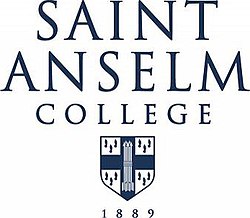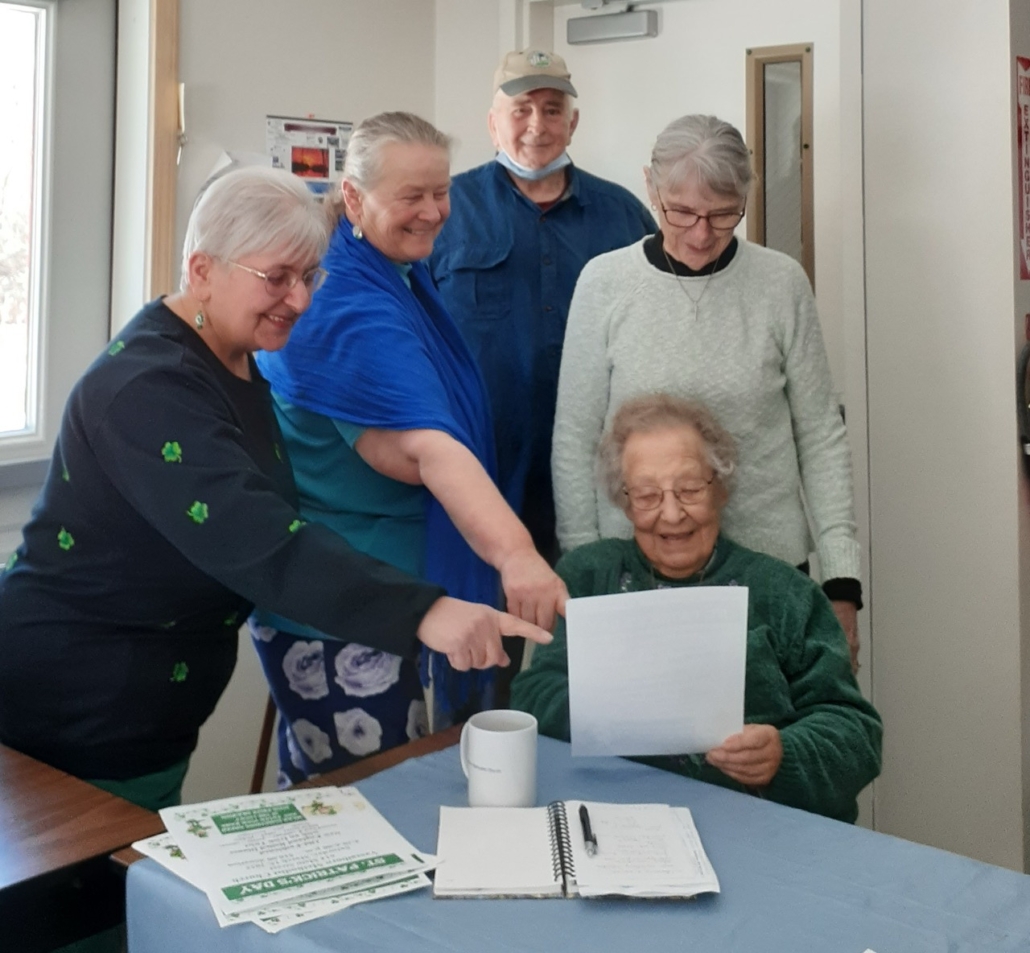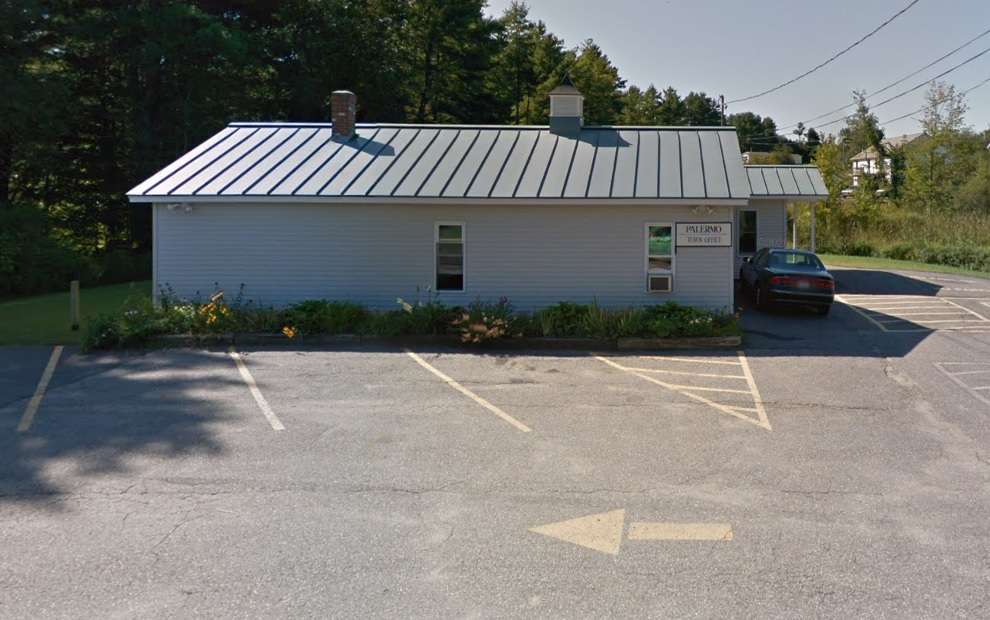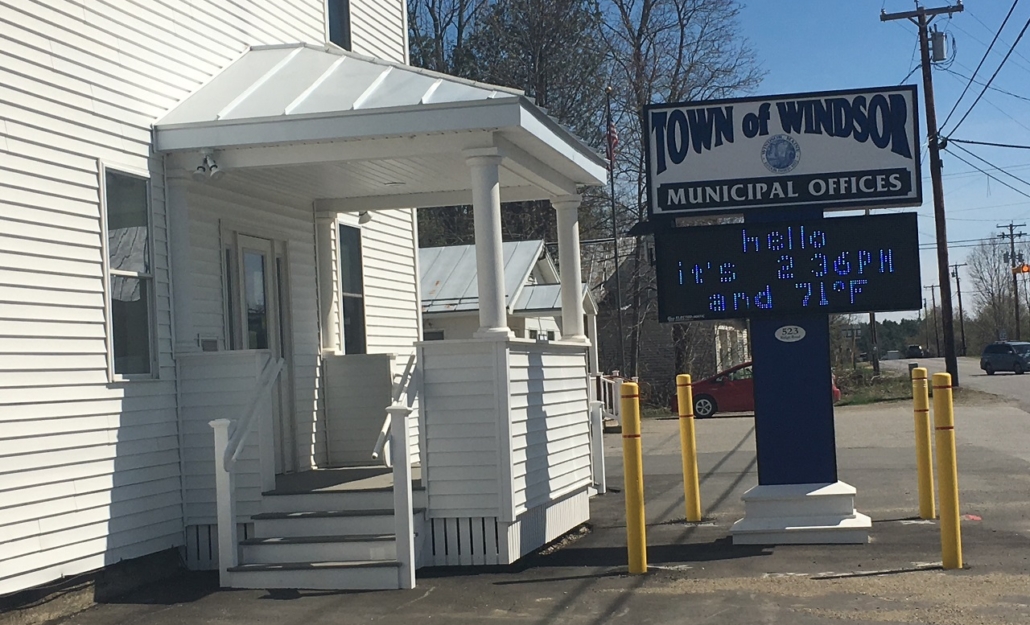Augusta native serves with Navy Helicopter Strike Force
/0 Comments/in Augusta, Community/by Website Editor
Petty Officer 3rd Class Theodore Mahaleris, of Augusta, with a Navy MH-60R Sea Hawk in the background. (photo by Mass Communication Specialist Seaman Joseph Sitter, Navy Public Affairs Support Element West)
Petty Officer 3rd Class Theodore Mahaleris, a native of Augusta, serves the U.S. Navy assigned to Helicopter Maritime Strike Squadron (HSM) 35.
Mahaleris graduated from Cony High School in 2017.
The skills and values needed to succeed in the Navy are similar to those found in Augusta.
“My hometown taught me the importance of small-town ideals,” Mahaleris said. “My city inspired me to venture off to experience new cities and new adventures. After joining the Navy, I was exposed to how much more the world had to offer.”
Mahaleris joined the Navy three years ago. Today, Mahaleris serves as a naval air crewman (tactical helicopter).
“I joined the Navy because I wanted to join a challenging and fulfilling community,” Mahaleris said. “Air rescue has provided the opportunity to travel to places I couldn’t ever imagine and contribute to a unique work environment. My great uncle served in the Navy and hearing his sea stories inspired me to join.”
Members of HSM-35 fly and maintain the MH-60R Sea Hawk helicopter, the Navy’s most advanced rotary wing maritime strike platform. The Navy MH-60R is able to perform many different missions. Some of the most common operations include strikes on maritime targets, submarine hunting and attack, electronic warfare, search and rescue, medical evacuations and supply support.
The U.S. Navy is celebrating its 250th birthday this year.
According to Navy officials, “America is a maritime nation and for 250 years, America’s Warfighting Navy has sailed the globe in defense of freedom.”
With 90 percent of global commerce traveling by sea and access to the internet relying on the security of undersea fiber optic cables, Navy officials continue to emphasize the prosperity of the United States is directly linked to recruiting and retaining talented people from across the rich fabric of America.
Mahaleris has many opportunities to achieve accomplishments during military service.
“My proudest accomplishment so far is graduating from the Fleet Replacement Aircrew (FRAC) training,” Mahaleris said. “I was able to push myself through rigorous training that I originally wasn’t inclined towards. I was able to achieve success in a rewarding career field that I would have never imagined myself in. The Romeo aircrew requirement is very intensive, but the opportunity to employ your skillset on a daily basis is unparalleled.”
Mahaleris serves a Navy that operates far forward, around the world and around the clock, promoting the nation’s prosperity and security.
“For me, serving in the Navy means training to be the best,” Mahaleris said. “To get to practice my mission set on a daily basis to protect this country is an experience unlike any other.”
Mahaleris is grateful to others for helping make a Navy career possible.
“I want to thank my mom and dad,” Mahaleris added. “Maine provided the foundation for me to propel myself to where I am today. I was able to leverage my experiences to become the leader I am today.”
3rd annual Mothers-to-be Tea returns in Vassalboro
/0 Comments/in Community, Events, Vassalboro/by Eric W. Austin
Sew for a Cause volunteer Barbara Clerite-Ventura prepares for the 3rd annual Mothers-to-be Tea, on Saturday, May 3. (contributed photo)
by Eric W. Austin
The 3rd Annual Mothers-to-Be Tea is set for Saturday, May 3, 2025, from 1-3 p.m., at the St. Bridget Center, in Vassalboro. This heartwarming event, hosted by the dedicated volunteers of Sew for a Cause, aims to provide a supportive and celebratory space for expectant mothers to relax, connect, and enjoy an afternoon of tea, treats, and community.
With free admission and a welcoming atmosphere, the Mothers-to-Be Tea is designed to bring local moms together, offering resources and connections to help them navigate the journey of motherhood. Whether it’s your first child or another exciting addition to the family, this event promises a memorable and uplifting experience.
Guests will be greeted with a delightful spread of tea and light refreshments in the gorgeously restored St. Bridget Center, creating a cozy, friendly setting. But the real treat? Every attendee will receive a Welcome Baby Bundle tote bag filled with handcrafted baby essentials, lovingly made by the Sew for a Cause volunteers. Expect handmade bibs, blankets, hats, and other adorable baby items that make preparing for a new arrival just a little sweeter.
Beyond the gifts, the event will also feature raffle baskets, with prizes generously donated by local businesses and community sponsors. Additionally, experienced moms will be on hand to share valuable tips, advice, and encouragement, helping to foster a sense of connection and support among attendees.
Rachel Kilbride, event organizer and Sew for a Cause volunteer, emphasizes the significance of creating a strong support system for new mothers.
“They say it takes a village to raise a child, but these days, many moms feel like they’re doing it alone. We want to change that,” says Kilbride.
Sew for a Cause is a dedicated group of volunteers who meet regularly at the St. Bridget Center to create handmade items for local charities and families in need. Their work benefits organizations such as Catholic Charities, Maine Children’s Home, Maine Veterans Home, and area nursing homes.
Space is limited, so expectant mothers must register no later than April 13, 2025 by emailing motherstobetea@gmail.com or calling 207-616-3148. Each mother-to-be is welcome to bring one guest to share in the celebration.
For those who want to support the event, donations are welcome to help sustain the work of Sew for a Cause. Contributions can be mailed to Sew for a Cause, c/o St. Bridget Center, PO Box 112, North Vassalboro, ME 04962, or dropped off at the venue.
Breznyak named to Saint Anselm College dean’s list
/0 Comments/in School News, Waterville/by Website Editor Saint Anselm College, in Manchester, New Hampshire, has released the dean’s list of high academic achievers for the first semester of the 2024-2025 school year.
Saint Anselm College, in Manchester, New Hampshire, has released the dean’s list of high academic achievers for the first semester of the 2024-2025 school year.
Mark W. Cronin, Dean of the College, announced that Abigail Breznyak, a Biology (BS) Major from Waterville, was named to the dean’s list for the fall 2024 semester at Saint Anselm College, in Manchester, New Hampshire.
EVENTS: St. Patrick’s public supper at Vassalboro Methodist Church
/0 Comments/in Events, Vassalboro/by Website Editor
The Fundraising & Activities Committee at Vassalboro Methodist Church is planning a public supper with an Irish twist for Saturday, March 15. Some committee members pictured here include, sitting, Theresa White. Standing, from left to right, Simone Antworth, Pastor Karen Merrill, Wayne Curtis, Linda Millay. (contributed photo)
Vassalboro Methodist Church will re-start their regular monthly public suppers on Saturday, March 15, with an “Old Fashioned New England Boiled dinner with an Irish Twist.” The meal will be served 4:30 – 6 p.m., at 614 Main Street. “We plan to change up our menus at some of our suppers this year in order to attract more interest but our famous baked beans will always be included, and pies which are always very popular,” said Dale Potter-Clark, one of the church’s event planners. The March 15 supper menu will include corned beef and cabbage, potato, carrots, baked beans, pickled beets, breads and pies for a $10 donation.
Added to the enjoyment of the evening, guests who wear something green can have their names entered in a door prize drawing. “We encourage people to get creative. Something green could be most anything within sight, such as a piece of jewelry, socks, hair color, nail polish or an entire outfit! Have fun with it,” said Potter-Clark.
FMI contact (207) 873-5544 or info.vumc@gmail.com Follow this and future special events and public meals on the Vassalboro United Methodist Church Facebook page.
Up and Down the Kennebec Valley: Windsor Primary Schools
/0 Comments/in Local History, Up and Down the Kennebec Valley, Windsor/by Mary Grow by Mary Grow
by Mary Grow
Note: part of this article was first published in the Oct. 28, 2021, issue of The Town Line.
This subseries on central Kennebec Valley towns’ early schools still has one town to cover: Windsor, a few miles off the river, east of Augusta and south of Vassalboro and China.
The area was first settled in the 1780s, mostly by people moving inland from Bristol and Damariscotta via the Sheepscot River. Organized around 1790 as New Waterford Plantation, it became Malta on March 3, 1809, Gerry in 1820 and Windsor in 1822.
Henry Kingsbury, in his 1892 Kennebec County history, commented that the town grew fast. He wrote that “a continual influx of population…augmented by the development of a new generation” meant that within 30 years after the first land claims, “nearly all the valuable lands [were] in the hands of permanent proprietors.”
Kingsbury noted how many of the first settlers’ families stayed in Windsor. His chapter on the town is full of references to their children and grandchildren (mostly the sons) still living there in 1892.
Windsor residents are fortunate: Kingsbury’s book is supplemented and updated by a well-researched town history by Linwood H. Lowden, published in 1993. It includes an equally well-researched chapter on schools by C. Arlene Barton Gilbert.
Gilbert wrote that Rev. Job Chadwick taught the first recorded school in Windsor, in 1804, for two months, with average attendance 15 to 20 students.
Chadwick’s school was funded by the Society for the Propagation of the Gospel, not by taxpayers. Gilbert commented that other religious organizations sometimes funded early education.
The earliest record of a Windsor – Malta, at the time – town meeting that Lowden found was on April 3, 1809, at Rev. Chadwick’s house. Gilbert said voters elected a four-man school committee, John Arnold, John Bughee (Bugbee?), Walter Dockendorff and Thomas LeBallister, and approved a $50 appropriation for education.
Voters also appropriated $700 “to be wrought upon the road or highways.” The latter was supplemented by approval of paying $1 a day for a man’s work on the roads and 66 cents a day for oxen, Lowden reported.
A year later, voters approved five school districts and appropriated $150. Gilbert copied from the town records: “this money for schooling be paid in lumber and produce.” In April 1811, she wrote, they appropriated $200 – and “were already rearranging school districts which they had established two years earlier.”
Kingsbury agreed about the five Malta school districts in 1810, taking information from “[t]he earliest authentic record which has been preserved.” He added, though, that talking with older residents led him to “infer” an earlier division into two or three districts.
One of the first districts, Kingsbury said, covered the entire area east of the West Branch of the Sheepscot River (somewhat less than half the town), and was later (in 1810?) divided into three districts. That district had a schoolhouse “built of logs” close to Charles Mason’s 1892 house.
Voters on April 16, 1812, elected seven school agents (including LeBallister), which Gilbert took to mean there were by then seven school districts. In 1813, she said, no education money was appropriated; but in 1814, one meeting raised $150 and a later one $200. Voters at the second meeting elected eight committee members (including Dockendorff), implying eight districts.
On April 6, 1818, another assemblage of voters approved $500 for education and elected 18 committee members (again including Dockendorff).
As in other towns, a school did not necessarily mean a schoolhouse. Neither Gilbert nor Kingsbury is clear about what Windsor school buildings were where at what time.
Gilbert quoted from a letter an early resident named John Linn wrote in March 1807 to a Boston resident saying he and friends had accumulated supplies to build “a small meeting house and to keep school, but all lies dead now.” What went wrong, and what Linn hoped his Boston friend could do about it, remained unexplained.
Lowden said Linn and his wife Rebecca (Anderson) came to Windsor in 1801 to settle on a lot he bought from his brother-in-law the previous autumn. With them were their 10 children, several of the boys “close to adulthood” (no wonder Linn was interested in a school). The family sailed from Boston to Bristol and “walked most of the way from Bristol to Windsor” (36 miles by 21st century roads).
The log schoolhouse in one of Kingsbury’s inferred pre-1810 school districts was not the first Windsor schoolhouse, he said; the first one was built at Windsor Corner (the present junction of Routes 32 and 105) “about where the town house now stands.” He gave no construction date, but said it burned in February 1832.
Another early schoolhouse Kingsbury called the Center schoolhouse. This building, he said, was used for the annual town meeting in 1819, for the first time.
Lowden said the first proposal to build a town house, where town meetings could be held, was in the spring of 1811; voters rejected it. Until 1819, per Kingsbury, meetings had been in private houses; for five years after 1819, the Center school and the Methodist church shared the duty.
(After that, Kingsbury said, voters assembled in barns. On May 15, 1845, he and Lowden wrote, voters approved building a town house, to be ready by June 1846; they started using it May 21, 1846 [Lowden] or in 1847 [Kingsbury].)
Gilbert wrote that once there were school buildings, annual town meetings – but, she implied, not necessarily special meetings – were “usually” held in them. One exception was on April 2, 1821, when voters met in the District 1 (Windsor Corner) schoolhouse. They raised $100 for education (and $1,200 for roads) and elected a four-man committee “for the inspection of teachers and schools.”
Gilbert summarized the next couple decades, as voters elected town school committees plus a changing number of (unpaid, she said) district agents. Annual education appropriations slowly increased, from $400 to $500 in the 1820s, to $600 in the 1830s and to $700 in 1841.
Kingsbury and Gilbert agreed that Windsor’s first annual school report was printed in 1851. Voters directed town officials to have 350 copies of the report “distributed two days before the annual meeting.” Gilbert did not know of any surviving in 1993.
Windsor’s 15 districts in 1866-67 Gilbert called the largest number simultaneously operating in the town’s history. She quoted at length from the school committee’s district-by-district report (omitting Districts 11, 12, and 15).
On April 1, 1866, the report said, Windsor had 478 students. Two dozen school terms were taught (two terms a year in all but Districts 5 and 6, which had no summer term), by 19 women and five men, funded by $1,161 in town money and $37.86 from the State of Maine.
Committee members (Orren Tyler, C. A. Pierce and Horace Colburn) praised most of the teachers. In District 13, though, it took a while to find the right one. Adelia Cunningham started, but residents were displeased because she wasn’t qualified to teach algebra, and she left after a week. Dolly Hilt, from China, took over; she got homesick and left after five days. Jennie Maxwell was then hired and did a good job.
The 1866 Windsor school committee members were very unhappy with the condition of the school buildings.
“Three-fifths of our school houses are not fit places for schools,” they wrote. Pig-pens or hen-houses, maybe; they refused to label them stables, calling them “miserable huts” and claiming parents who sent their children into them wouldn’t consider housing their horses or oxen so badly over the winter.
One consequence, the school committee members said, was that competent teachers refused to teach in Windsor, and the town had to hire inferior ones.
Their proposed remedy was consolidation, among small districts or between a large and a small, to provide resources to build decent buildings. It would be better, they said, for children who wanted an education to travel a mile and a half to a school “that will fully repay them for their labor” than to go half a mile “and attend a nuisance.”
In 1878/79, school supervisor J. H. Barton was still advocating consolidation, on the ground that “it is hardly economy to employ a teacher for only ten or twelve scholars” in a small district. His main gripes were not buildings, but lack of parental interest – children study harder if their parents reward with “love and approval,” he said – and too few or too varied textbooks.
For 1881, supervisor W. E. Gorham, M.D., wrote a long, erudite and occasionally blunt report that included references to the Prussian education system two centuries earlier, the Bible and Athenian law-giver Solon (630 – 560 BCE). Gorham called for eliminating at least two districts, unless the entire “bungling” district system was abolished; and complained about inadequate school furnishings.
School libraries, maps and globes, proper blackboard erasers and a chair for the teacher – some schools provided not even a milking stool, he claimed – were among Gorham’s recommendations.
He, too, stressed the parents’ role. Their influence, he wrote, “dates from remote pre-natal conditions, little understood by people generally.” He recommended more study of “inherited tendencies,” and suggested penalties for parents who did not send their children to school.
Gilbert provided locations for some of Windsor’s 16 school districts, and Kingsbury added information on a few of the schoolhouses. When the consolidated school opened in 1951, town officials sold remaining five rural school buildings, Gilbert wrote.
She said the early Windsor Corner building that Kingsbury said burned in 1832 was probably on the east side of current Route 32, and after the fire was rebuilt on the west side, roughly across the road from the town hall. It survived, with frequent repairs, until 1951.
Electricity was not installed until 1836, Gilbert said. School days ran from 9 a.m. to 4 p.m.; kerosene lights made late-afternoon classes challenging on sunless winter days.
Gilbert said in 1951, town officials leased the school building for 99 years, for $1, to the “newly organized Windsor Volunteer Fire Department.” Firefighters were authorized to remodel it.
District 2, in South Windsor, had at least three consecutive buildings in slightly different places, the first two burning down. The final one lasted until 1951, when town officials sold it for $803; it became a house, still occupied in 1993. The North Windsor (District 3) building on Route 32 also closed in 1951 and was converted to a house, Gilbert wrote.
Kingsbury said the original building in Barton District (District 4, in western Windsor, where Dr. Stephen Barton and his family settled in 1803) was moved from its first site closer to the center of the district around 1850. It burned about 1889 and there was a new one on the old foundation by 1892.
Gilbert wrote that her father went to the Barton School. Around 1889, she said, most students were understood to be Stephen Barton’s descendants. In 1912, students were transferred to North Windsor and in 1913 town officials sold the building for $30.
Kingsbury said the Windsor Neck (District 7) schoolhouse in the northeast was in 1892 on the same spot as an earlier one “which was torn away nearly fifty years ago.” Gilbert found evidence in town reports that a third one was built in 1896; it was used until 1951.
In 1892, Kingsbury said, there were five original schoolhouses still standing, a 70-year-old one in the Pierce or Hallowell District (which is not on Gilbert’s list) and others in Districts 6 (Erskine, to Gilbert), 8, 10 (Coleman, on Legion Park Road, closed about 1926) and 16.
Main sources
Kingsbury, Henry D., ed., Illustrated History of Kennebec County Maine 1625-1892 (1892).
Lowden, Linwood H., good Land & fine Contrey but Poor roads a history of Windsor, Maine (1993).
EVENTS: Palermo planning board to meet
/0 Comments/in Events, Palermo/by Website Editor The Palermo Planning Board will meet Thursday, March 13, 2025, at the Palermo Town Office, at 6 pm. Purpose is to conduct official review of plans for the proposed Pine Hill subdivision on Hostile Valley Road, Tax Map R11, Lot 27C.
The Palermo Planning Board will meet Thursday, March 13, 2025, at the Palermo Town Office, at 6 pm. Purpose is to conduct official review of plans for the proposed Pine Hill subdivision on Hostile Valley Road, Tax Map R11, Lot 27C.
Erskine Academy student to participate in Poetry Out Loud State Finals
/0 Comments/in China, Erskine, School News, Whitefield/by Website Editor
Erskine Academy
As Poetry Out Loud celebrates its 20th anniversary, Maine’s most talented high school students took the stage at the Poetry Out Loud State Finals, on Monday, March 3, at 5 p.m., at the Waterville Opera House. This milestone year honors two decades of inspiring students across the country to explore poetry through recitation, building confidence, public speaking skills, and a lifelong appreciation for literature. This year, 11 outstanding student poets from across Maine have advanced through school and regional competitions to compete for the state title. Erskine Academy is pleased to announce that freshman Stella Martinelli, of Whitefield, has advanced to the State Finals competition.
The Maine State Champion will receive a $200 prize and advance to the National Finals in Washington, D.C., where they will compete for $50,000 in scholarships and school stipends. The state champion’s school will receive $500 to support poetry materials, while the first runner-up will be awarded $100, with $200 for their school. The Poetry Foundation administers all monetary prizes and travel arrangements for national finalists.
This free and public event was live streamed by Portland Media Center on the Maine Arts Commission Facebook page, with a final produced broadcast available later in the year.
COMMUNITY COMMENTARY: Tariffs to dramatically increase energy burden on Maine families
/0 Comments/in Central ME, Community Commentary, Opinion/by Website Editor by Lucy Hochschartner
by Lucy Hochschartner
Maine Conservation Voters’ Climate and Clean Energy Director
In the early hours of the morning, President Trump enacted 25 percent tariffs on imports from Canada and Mexico, with 10 percent tariffs on Canadian energy imports. These tariffs are poised to have a devastating effect on Maine families who are already struggling to keep up with rising energy costs. Half of Maine families rely on oil for heating, and 80 percent of Maine’s heating fuel and gasoline is imported from Canada. Regionally, the New England grid operator anticipates $66 million in import duties to import Canadian electricity that will have to be passed on to customers. These tariffs will affect all energy costs, from heating to electricity to gasoline at the pump.
President Trump’s tariffs are going to hurt us. Whether it is you who is impacted, your family, your neighbors, or your friends – these tariffs will increase energy costs dramatically at a time when we must do the opposite. It is time for all of us to take care of each other, regardless of whether we voted for the same person or share the same views. The only way forward is to lean on each other, and into the future of a clean, Maine-made energy system.”
In the long term, Maine can look to Maine-made renewables like onshore wind, offshore wind, and solar to avoid this kind of dependency on volatile global fossil fuel markets. In the meantime, customers should look to local Community Action Agencies, their town’s general assistance program, or their utility company for help if they are struggling to pay. Mainers can get connected to local assistance programs now by calling 2-1-1.
WINDSOR: Long discussion takes place about Long Pond Acres
/0 Comments/in News, Windsor/by Website Editor by The Town Line staff
by The Town Line staff
At their February 11,2025, meeting, the Windsor Select Board heard from Town Manager Theresa Haskell that she received a letter from Delta Ambulance confirming the $35 per capita fee imposed on the town for ambulance service.
Also, Dan. West sent an invoice to the town for $100. This is for his appointed secretary duties for the planning board meeting on January 6. Broken down, it is $75 for the service and an additional $25 for doing agenda preparation for the planning board’s February 3, 2025, meeting.
A water test was conducted for the town office on January 28. The test results have not come back yet. Not PFAS test was done at this time. There will be more discussion as to whether a PFAS test will be done in the future.
Select board members approved the PSAP contract, as written, and authorized Haskell to sign the contract, which includes an fee increase.
In personnel changes, the board approved a motion to remove Thomas Leonard as a planning board alternate, and appointed Carol Chavarie as planning board chairman. Leonard was removed for missing numerous planning board meetings, and several attempts to contact him have failed. Nancy Fish was appointed to the planning board.
Matthew Taylor handed out a packed for the select board to review and spoke with the select board at length regarding the Long Pond Acres Subdivision. Questions were raised regarding the right of way and the fire road. Taylor, as well as other lot owners, said Taylor is looking for more clarification. Taylor collected information after meetings with Greg Feltis, assistant Codes Enforcement Officer, Carol Chavarie, planning board chairman, and Theresa Haskell, town manager. Following much discussion, the select board will send information to the town attorney for review and request the planning board draft a letter by February 28, 2025, for all property owners and abutters so Taylor can take to his meeting stating the town is having the town’s attorney investigate further.
In other business, Troy Thibodeau and Gery Mitchell from Clean Energy Connect were present to let the select board know what has been happening around town power lines. He said most of the large equipment has been removed from the work sites or is already on site that they need. There are only a few pieces of large equipment that will be brought in, a transaxle crane and bulldozer. The plan is to be finished work. by June 2025. They are aware of the damage being done to the roads and they are documenting it the best they can and if the public works department sees areas, to let them know so they can forecast the cost for repairs they will need for which to account.
Bill Portela spoke to the board regarding a dangerous dog situation. He says he has been walking his dog, on a leash, on the South Belfast Road, and has been attacked by two German shepherds. He showed a video of one attack, when he needed the aid of a school bus driver and a passing motorist. He read, out loud, the state statute for dangerous dogs. He believes these situations meet the guidelines for dangerous dogs. A formal letter was submitted to begin the legal process.
The next meeting of the select board was held on February 25, 2025.
Interesting links
Here are some interesting links for you! Enjoy your stay :)Site Map
- Issue for April 3, 2025
- Issue for March 27, 2025
- Issue for March 20, 2025
- Issue for March 13, 2025
- Issue for March 6, 2025
- Issue for February 27, 2025
- Issue for February 20, 2025
- Issue for February 13, 2025
- Issue for February 6, 2025
- Issue for January 30, 2025
- Issue for January 23, 2025
- Issue for January 16, 2025
- Issue for January 9, 2025
- Issue for January 2, 2025
- Issue for December 19, 2024
- Issue for December 12, 2024
- Issue for December 5, 2024
- Issue for November 28, 2024
- Issue for November 21, 2024
- Issue for November 14, 2024
- Issue for November 7, 2024
- Issue for October 31, 2024
- Issue for October 24, 2024
- Issue for October 17, 2024
- Issue for October 10, 2024
- Issue for October 3, 2024
- Sections
- Our Town’s Services
- Classifieds
- About Us
- Original Columnists
- Community Commentary
- The Best View
- Eric’s Tech Talk
- The Frugal Mainer
- Garden Works
- Give Us Your Best Shot!
- Growing Your Business
- INside the OUTside
- I’m Just Curious
- Maine Memories
- Mary Grow’s community reporting
- Messing About in the Maine Woods
- The Money Minute
- Pages in Time
- Review Potpourri
- Scores & Outdoors
- Small Space Gardening
- Student Writers’ Program
- Solon & Beyond
- Tim’s Tunes
- Veterans Corner
- Donate




